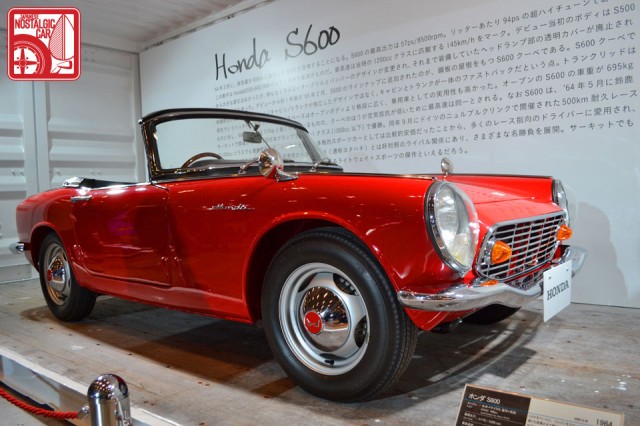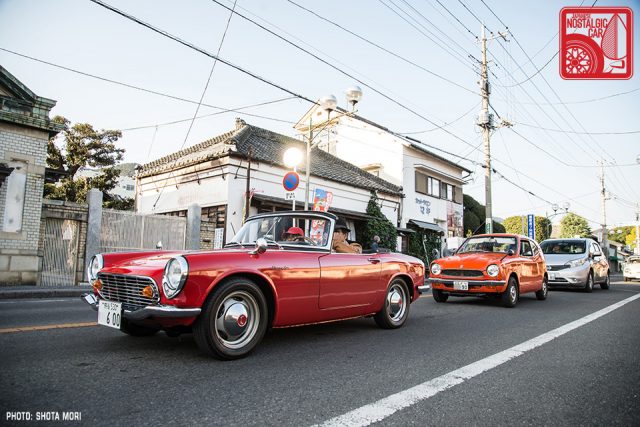This year marks Honda’s 75th anniversary as a company, and they’re celebrating in a very unique way. Honda is offering a colored pencil that is the exact shade of their official “Honda Red” corporate color. It’s the same red that’s used in the Honda logo and in many of the company’s products, from motorcycles to lawn mowers. However, to even get this color on his cars, Soichiro Honda had to fight an unexpected battle.
Honda has a long history with the color red. In 1952 Honda launched the Cub Type F, essentially a motor that could be retrofitted to a bicycle. The bike was not part of the package. When customers bought a Cub, only the engine, fuel tank, and mounting equipment came in the box.
To set itself apart, Honda distinguished the Cub with a bright red engine and pristine white fuel tank. “White tank, red engine” became a Honda catchphrase and bikes fitted with Honda engines became instantly recognizable on crowded streets.
The strong association between Honda and the color red quickly spread. In 1959 when Honda released the F150, its first tiller, it was almost certainly painted red. We say can’t say for sure because no color photos of the first F150 exist. But Honda believes that it is red, and started the tradition of all its power products being painted red.
It was quite unusual for a piece of farming equipment to be painted such a bright color at the time. The F150 was also a revolutionary product in itself, Honda’s first complete power product. Most agricultural machinery were heavy, full of belts and pulleys, and required some know-how to operate. In comparison the F150 was a work of art.
Honda covered up all the dangerous bits with bodywork, gave the F150 an easy-start lever, ergonomic handles, and even a shock absorber to quell vibrations. It could double as a tow tractor when actual tractors were rare and expensive. The tiller was such a hit it garnered the nickname “Honda Whirlwind” and it was said that it turned Japan’s fields red overnight.
In the early 1960s Honda was on the verge of building their first car. The Japanese government’s Ministry of International Trade and Industry (MITI) had kicked off the People’s Car program, incentivizing automakers to build kei cars with a maximum displacement of 360cc. The obvious choice for most companies was to build family cars, but Soichiro Honda insisted on making a sports car.
The result was the S360 concept, an early predecessor to the S500, S600, S800, and S2000. The original was lost to time, but in 2013 Honda built a replica. During development, one prototype was painted an orangish-red. When Soichiro Honda saw it he was determined to put the color on Honda’s new sports car. “The new car is definitely going to be red, but we should use a more vivid red,” he declared.
It was easier said than done. A Japanese law at the time stated that only emergency vehicles — fire trucks and ambulances — could be painted red or white. The headstrong founder took up arms against MITI, sending one of his managers from Honda R&D to MITI offices to plead their case. They gave responded sternly, rubbing salt in the wound by telling the manager, “I know Honda but I’ve never heard of Honda R&D.”
Meanwhile, Honda was in a race against time. A different MITI law had been proposed to lock any company that had yet to build a car out of the auto industry altogether. The Toyotas and Nissans of the world would be just fine, but Honda was primarily a motorcycle company and had yet to produce a single car.
Now Honda was fighting on two fronts. Unafraid to poke the bear, Soichiro Honda took up the cause of paint color himself, arguing in various media that he should be allowed to sell privately owned cars in whatever hue he pleased. He even penned an excoriating critique in the Asahi Shimbun, one of Japan’s top newspapers:
Red is a basic color of design. How can they ban it by law? I’m aware of no other industrial nation in the world in which the state monopolizes the use of colors.
Whether Honda’s lobbying had any effect is unknown, but eventually MITI granted Honda the approval to sell red cars. The manager was thrilled to give Honda-san the report. Upon hearing the news, however, Old Man Soichiro merely responded with a nonchalant “Oh, good.”
The company officially adopted “Honda Red” as its corporate color in 2001. This year marks the 75th anniversary of the company and in honor of the occasion Honda has released an official “Honda Red” colored pencil. Available on its own (¥132, or 91 cents) or as part of a 3-color set (¥385, or $2.67), they are made by renowned Japanese stationery company Tombow. Of course, they are only available in Japan.
1960s Honda was a tiny company compared to juggernauts like Toyota or Nissan, but only Honda challenged MITI for their right to use the whole color spectrum. Soon after, red Sports 800s and Datsun Fairladys began rolling out of factories. Enthusiasts who are fortunate enough to have a Solar Red 2000GT or GT Red Hakosuka, they have Soichiro Honda to thank.
Images courtesy of Honda.


















McLaren MP4: Marlboro Red or Honda Red?
And OD was restricted to GSD vehicles! So. manufacturers were very cautious about Green toned cars…